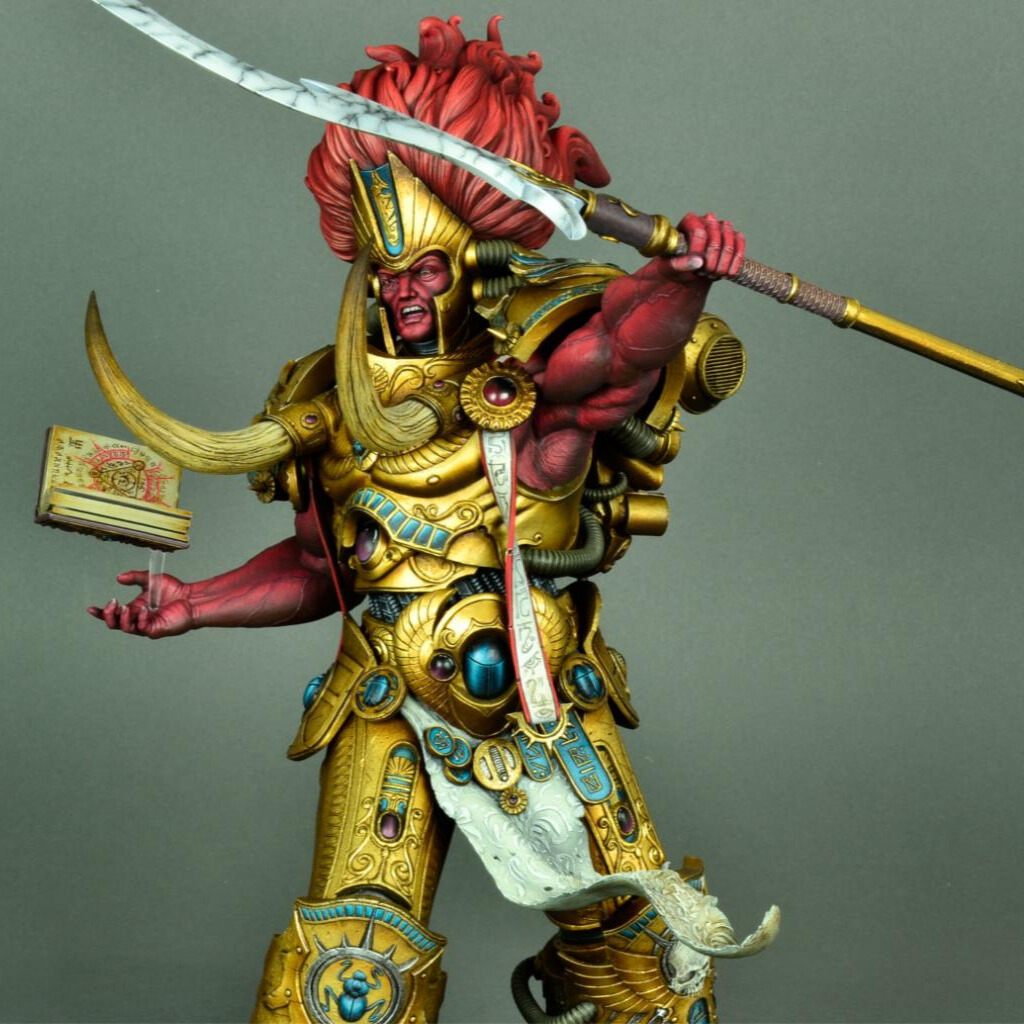Interview With
Iron Keep Studio

Iron Keep Studio from Poland is a real gem in the world of miniature painting and terrain building. They’re known for their knack for detail and top-notch craftsmanship, catering to everyone from hardcore wargaming fans to collectors looking for something special. Their work is all about turning each project into a unique piece of art, combining a perfectionist’s touch with a whole lot of creativity. In our upcoming interview with Gregor, we dive into their world, unpacking their cool techniques and creative know-how. It’s a must-read for anyone curious about the magic behind professional miniature artistry.
1. How did you start with miniature painting?
Before I say how I started, I would like to say when I started. When I am asked about the
beginnings of my painting journey, I always answer that it all started at the age of 33. Yes, that’s right, I
started very late, as opposed to most people who begin painting in their teens.
But I also had a quick fling with miniature painting when I was at university, over 20 years ago.
Back then Peter Jackson’s movies were taking the world by storm and LotR magazine with GW
miniatures was being released in Poland. I had always been a big fan of Tolkien’s work and painting
miniatures of one’s favourite characters seemed like a very cool idea, especially with the movie
adaptations igniting my imagination. But that didn’t last long, merely several months during which I
managed to paint several figures. I still have a few of them laying around somewhere as a reminder of
my painting origins.
Then, after 12 or 13 years of not even thinking about painting, I accidentally came back and I did
it big time. I was very interested in railroad terrain at that time and I made a few terrain pieces of my own:
large hills, small hills, fences, things like that. And since I didn’t need them, as I was more interested in
the creative process itself, I was selling everything I built on eBay.Then one day, a Warhammer player,
who saw my auctions, approached me asking if I’d be interested in building a full size (180 x 120 cm)
board for him. I didn’t think twice and agreed immediately. Once the board was finished and delivered to
its new happy owner, he suggested that I should consider painting tabletop miniatures instead or at least
do it along with tabletop terrain making. At that moment in my life I was looking for a new job and
commission painting seemed like not a bad idea at all. I was then commissioned with a big army of Dark
Angels by the very same gentleman whom I previously made the board for. It was a very risky move as I
didn’t have any experience in commission painting at all. So I spent countless hours watching painting
tutorials, I bought an airbrush, learnt how to use it, all of it while I was working on my very first
commission.
Now that I look back at how it all started, it kind of feels unreal and it’s sometimes hard to believe
that it actually worked. It was like jumping into deep water not knowing how to swim. But it did work, and
after 8 years, I am still in business and can’t imagine doing anything else for a living 🙂
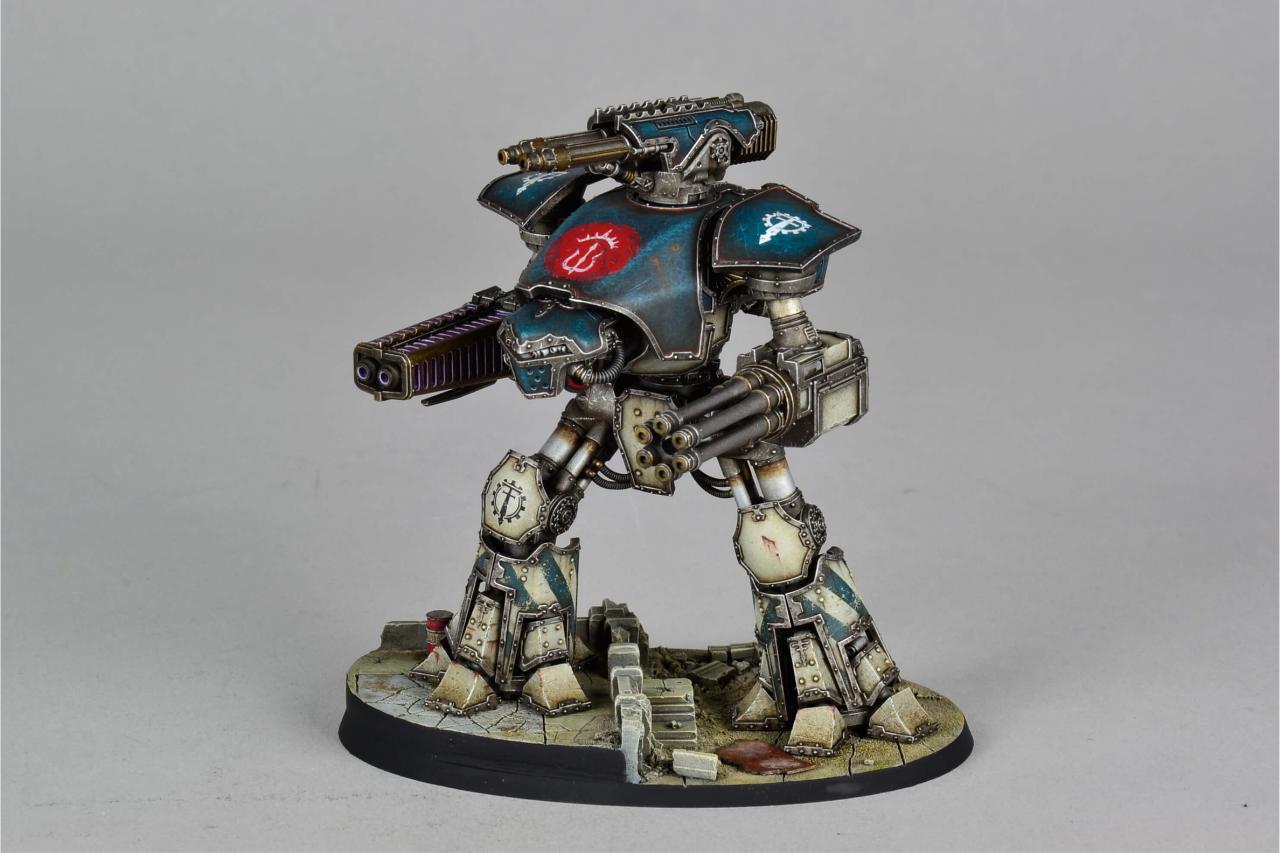
2. Describe your painting style in 5 words.
That’s a tough one. For years I didn’t even know I had a style and I most likely didn’t, especially
during my early years, when everything was new to me and I had to discover things on my own. After a
few years I started hearing opinions that my painting is recognisable, that I paint in a way that can be
distinguished from others. That was a big surprise to me as I had never tried to paint in any particular
way. My only goal, from day one, was to paint miniatures/models that are pleasant to the eye. It was all
that mattered to me. Relatively smooth transitions, readable details, simply speaking: nice miniatures. I
was never a philosopher when it came to artistic approach to painting.
But with time and experience I came to realise that I subconsciously started to favour certain
esthetics. I started combining clean, neat finish with realistic approach and weathering techniques, for
which I have always had a soft spot. Worn, scratched and dusty power armour has always been more
appealing to me than a brand new shiny one straight out of the production line. We paint toy soldiers,
that’s true, but that doesn’t mean they couldn’t be approached in a more realistic way. I have noticed,
though, that a lot of people don’t understand how they should approach weathering. Properly applied
weathering requires understanding of the process in real life. Like with armour wear, for instance, it’s
necessary to observe and understand how armoured vehicles behave. Which parts are more prone to
wear, where paint chips off most often and is most likely to, how and where dust settles etc. Studying
reference images helps a lot.
All in all, I would say that my painting style is a combination of techniques widely and originally
used in scale modeling and a typical, neat, high contrast approach commonly seen in miniature painting.
And how to compact all that in 5 words? SCALE MODELING AND MINIATURE PAINTING HYBRID
style? 🙂
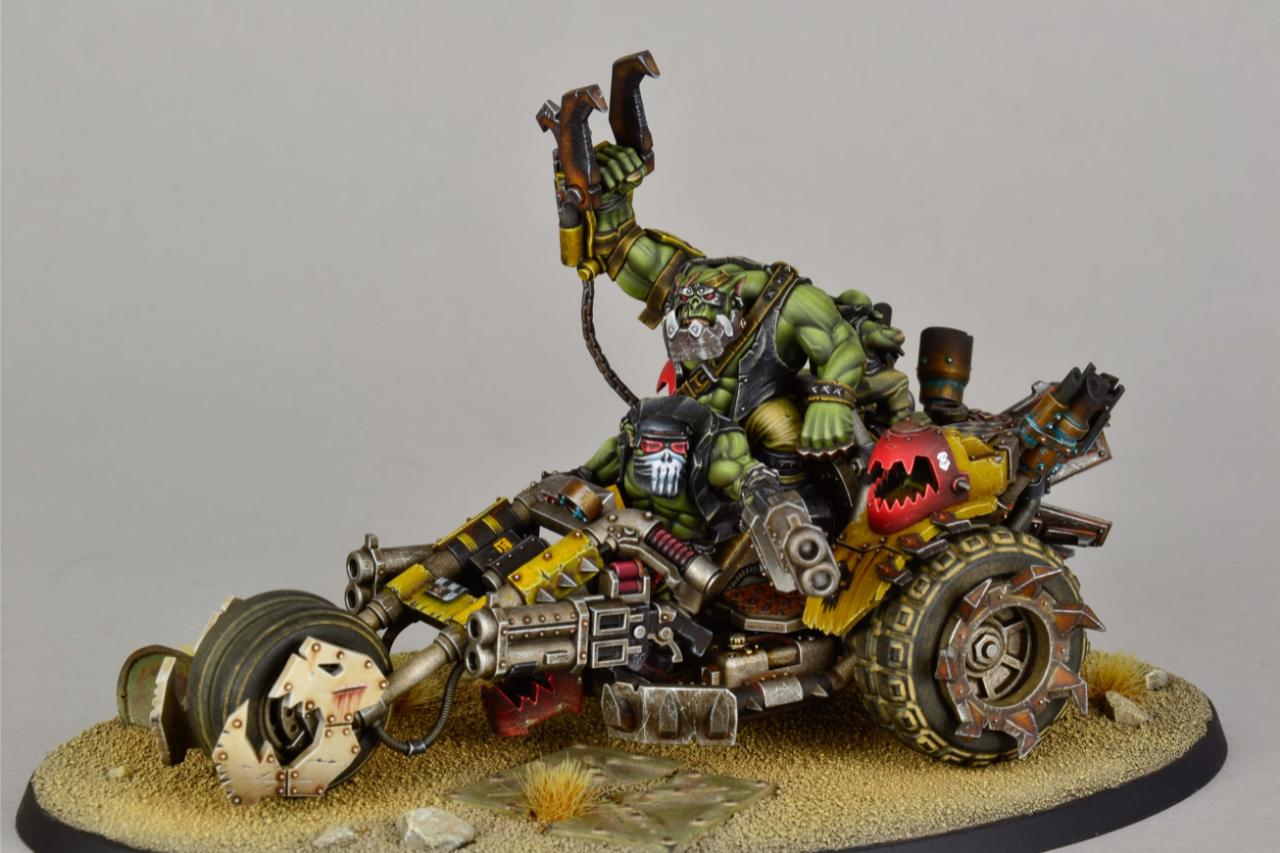
3. What was it like to enter and win two awards at Golden Demon? Would you enter again?
Winning Golden Demon is the ultimate goal for all of us, warhammer fanboys and painting
enthusiasts. Ever since I started painting warhammer and fell in love with Horus Heresy lore, I dreamed
about winning a Demon. Well, I dreamed about being able to go there and participate in the competition
in the first place. But flying to the UK and staying for the weekend to be able to compete was always a
big financial strain for me. Then there was the covid period and Golden Demon was suspended, and
when it emerged again after two years of absence, the tickets were limited. Being lucky to obtain one of
the tickets was like a sign that, no matter what, I had to go. So I went.
The biggest difficulty for me in competing for Golden Demon is my very slow painting pace and
because of it, and numerous commissions waiting in line, I have no time to work on my own models,
which I could then enter into Golden Demon or into any other painting competition, actually. In fact, I
haven’t painted a single model for myself ever since I started painting 8 years ago. So in order to be able
to compete at all, I have to choose from models I have been commissioned with. I have to decide which
model would be suitable as an entry and could fight for a trophy.
The resurfaced competition in 2022 is believed to have been the toughest one in history. People
had two years to work on their entries and the level of models entered was insanely high. When I looked
at the number (around 90) and the extremely high standard of models entered in my category (vehicle) I
was kind of devastated. I was very proud of my ork wartrike but winning it felt out of reach, to say the
least. Even seeing a commended card next to my model left me with very little hope for anything. Then,
standing among all the nominees at the awards ceremony I heard my name being called and saw an
image of my entry projected on the white screen. I was so shocked that I literally couldn’t believe it was
actually happening. It was one of the most emotional moments in my life, experiencing one of my dreams
come true. It was so emotional that I shed a tear or a dozen.
Next year I went again and won another statue in the same category, this time entering an
imperial army armoured transport in winter camo. But that competition left a bitter-sweet taste in my
mouth as the judges’ decision was hard to comprehend. Normally I would have been over the moon
winning my second Demon second year in a row, but being placed so low kind of soured the joy of
winning. Especially because the judges were very elusive this year and getting any feedback was simply
impossible.
Will I enter again? Without a doubt! I have two bronze statues in my collection, there’s still room
for other colours! Golden Demon as a competition has its flaws but we, warhammer fans, love it
nonetheless!
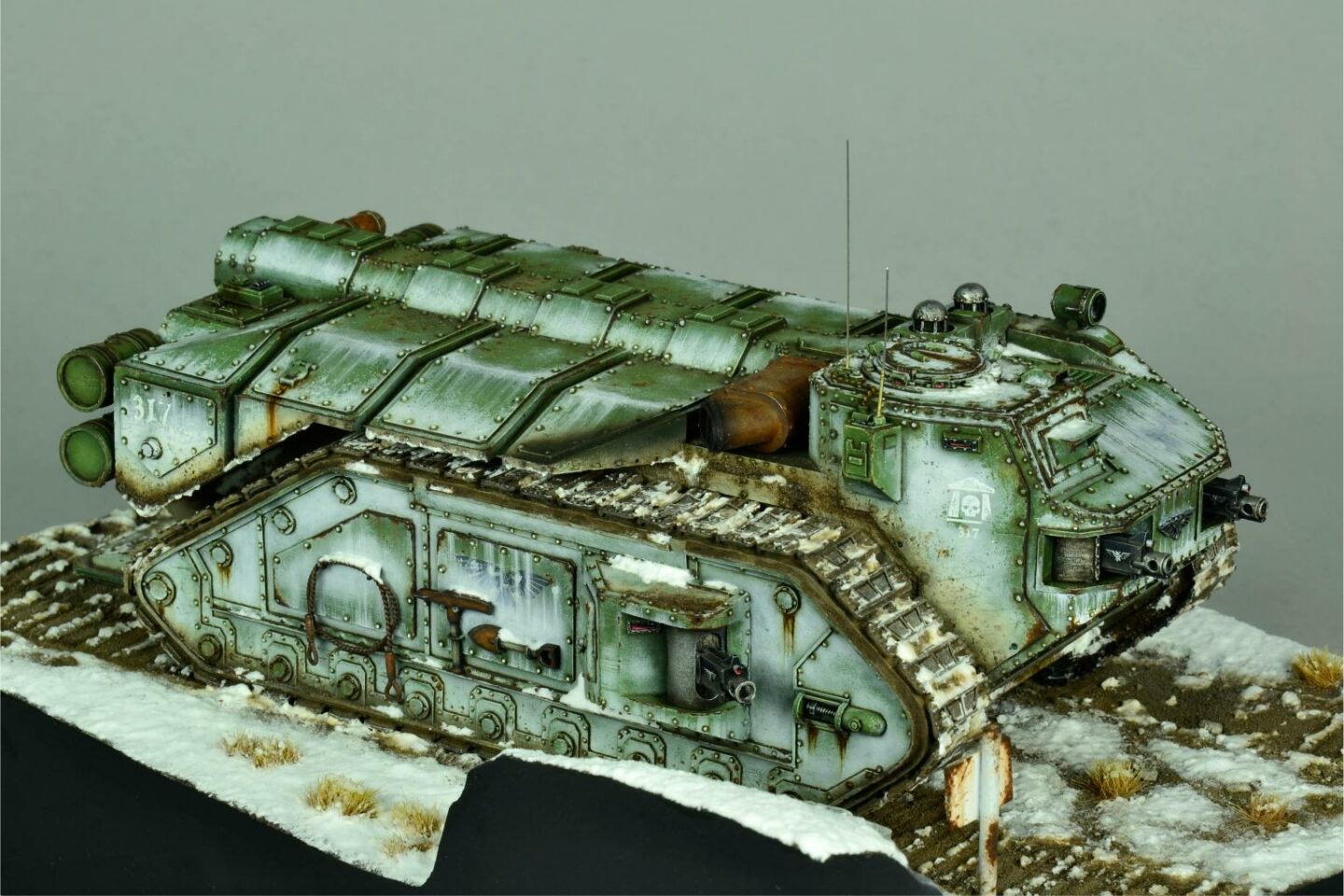
4. What is your main source of inspiration?
My main source of inspiration are mostly miniatures or models painted by other artists who I
admire. It doesn’t mean that I copy their work, especially that in most cases their styles differ significantly
from my own, but when I find something that I like very much, I sometimes try doing something similar,
with my own watermark, so to speak.
When it comes to weathering, though, it looks different. I surely appreciate other artists’ work,
especially accomplished scale modelers’ work, but in most cases I take inspiration from real life
reference images. I sometimes take pictures of some interesting rusty features I find during a walk, for
instance, and then try to replicate it on miniatures or bases. I often look at images of tanks and civilian
vehicles. I study their appearance, level of wear, the way they wear and I try to transfer my knowledge
and observation onto my scale models to make them look credible.

5. How do you start with a new model or miniature to paint?
I usually begin with a study. In most cases I have a vague vision in my head of what I want to
achieve and often look for reference images of something similar online, in painting books or magazines,
to clarify that vision. When I find anything matching my vision, I save the images and use them as
inspiration. Quite often, when I paint a miniature or a model I want to tell a certain story using paints and
appropriate techniques. When I do, I make a simple ‘to do list’ of steps needed to achieve the desired
appearance. If I know the drill, the list exists only in my head as I don’t need a physical one anymore, but
if I’m doing something for the first time, I write the steps down on a piece of paper so that I can have a
look at them any time I need. In the latter case, what ends up being written down is just my assumption
of steps necessary to take me where I want to end up but it’s not uncommon to make adjustments along
the way or even look for other solutions.
When the painting plan is ready I begin to assemble the model/miniature. This stage also requires
some thinking as I am one of those painters who like to work in subassemblies for the ease and comfort
of painting. Then painting begins.
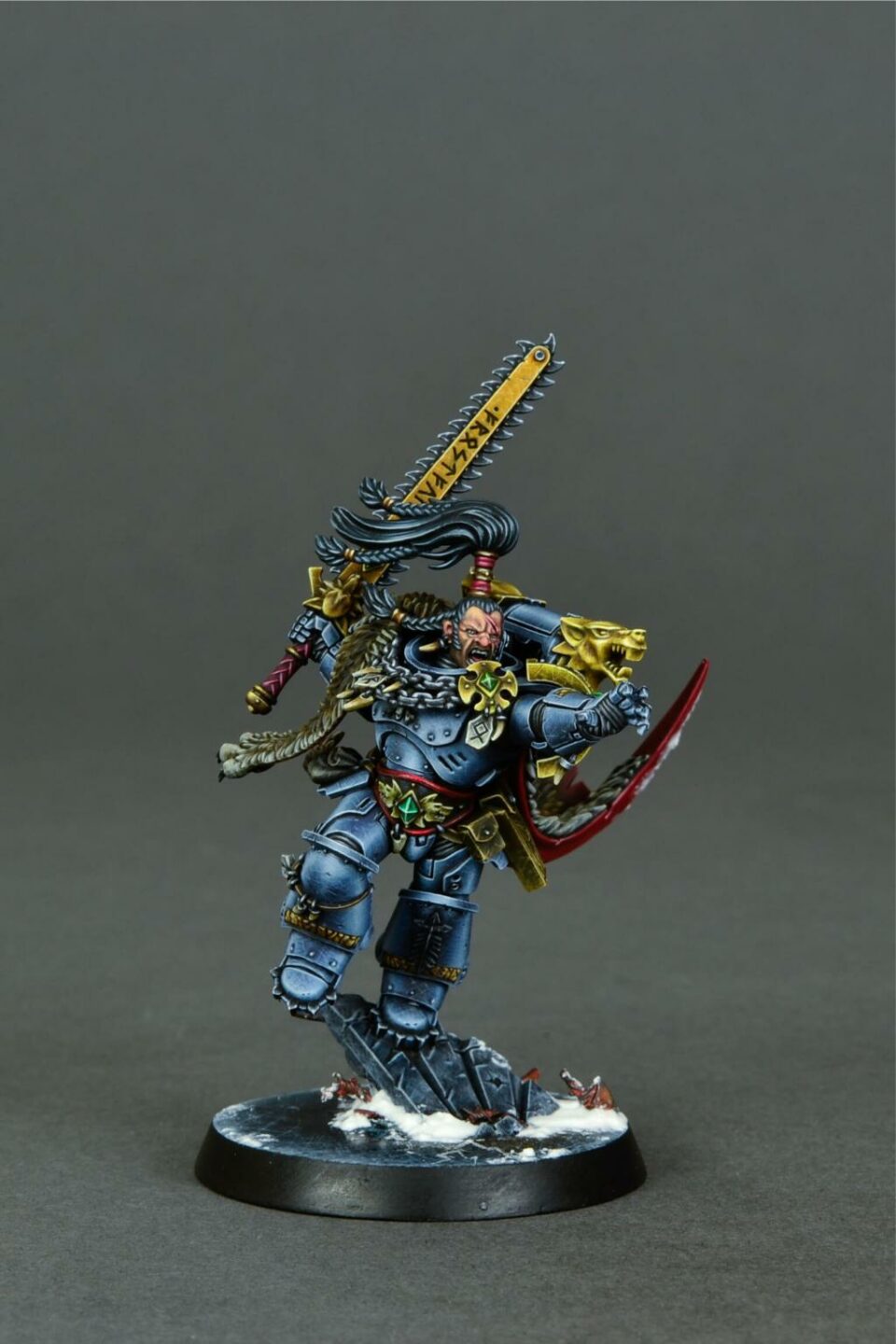
6. Why would you say a wet palette was important for miniature painting?
Because it makes the process so much easier and more enjoyable! A wet palette was designed to
make paints last much longer without losing their properties, which is very convenient for many reasons.
When compared to a dry palette, it reduces the amount of paint wasted to a minimum. It prolongs paint
life to many days so longer breaks between painting sessions are no problem at all.
Frankly, it’s difficult for me to imagine what it’s like to paint without a wet palette as I have been
using one since day one.
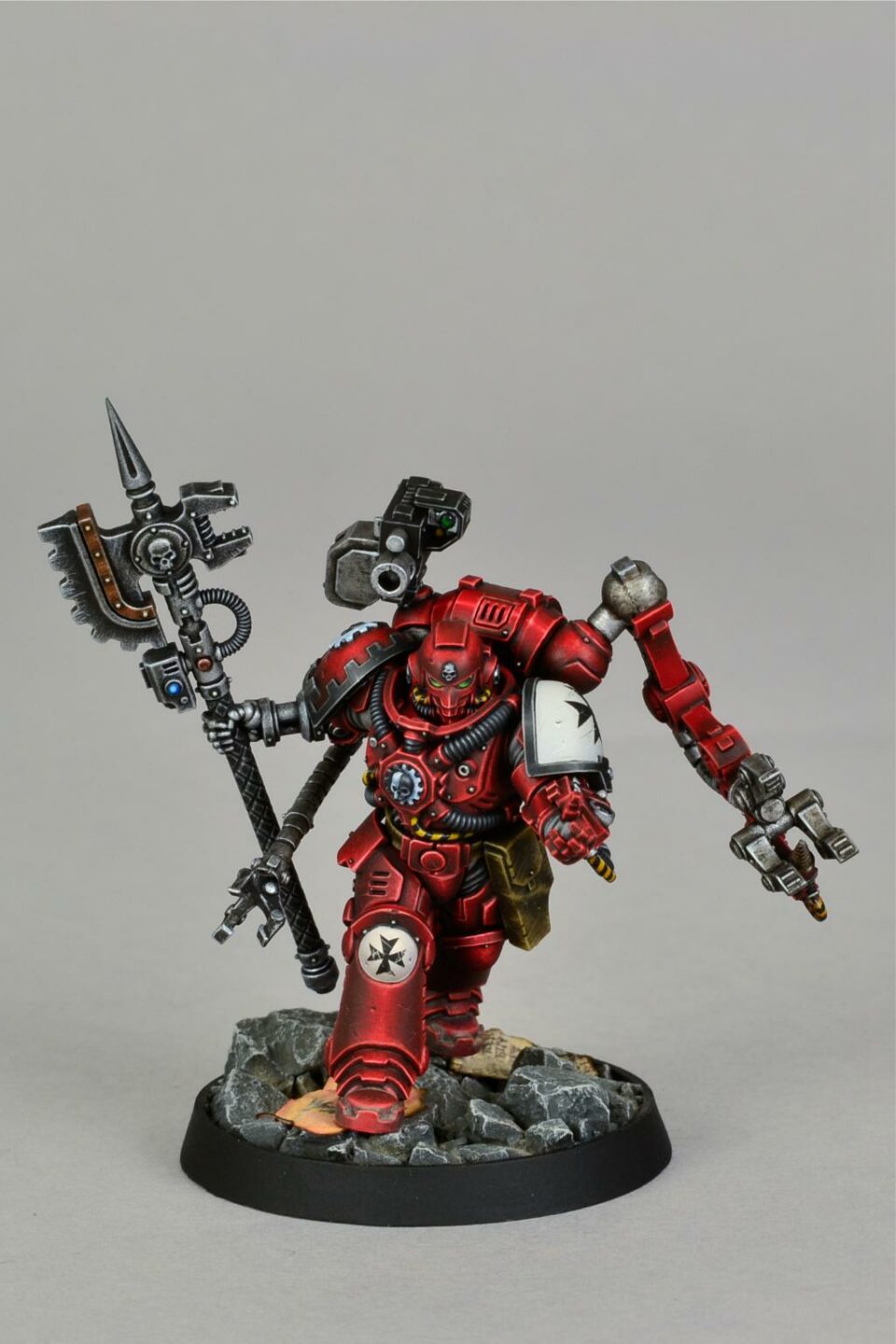
7. Who do you look up to in the miniature painting community?
Oh, there’s quite a few amazing and inspiring artists out there, whom I have been watching and
admiring for years.
I think THE artist that is the closest to my heart and my own painting approach is Richard Gray
aka Deamonrich. His pieces are just beautiful and he manages to produce that kind of credible
weathering that is so appealing to me.
The artist I admire the most in the whole community is my countryman, Michał Pisarski aka LAN,
even though he rarely paints warhammer. This man cannot be human, simply because his miniatures
seem to be out of this world and no human should be able to paint like he does!
I absolutely adore Johan Philipsen from Warpstormpainting for his super vivid and high contrast
finishes on warhammer minis.
My buddy Jarosław Drabek aka Camelson has always been an inspiration to me. He showed me
a few useful things at the beginning of my painting adventure, and for that I will ever be grateful.
David Arroba, Jose DaVinci, Max Faleij, Angello Di Chello, the list goes on and on.
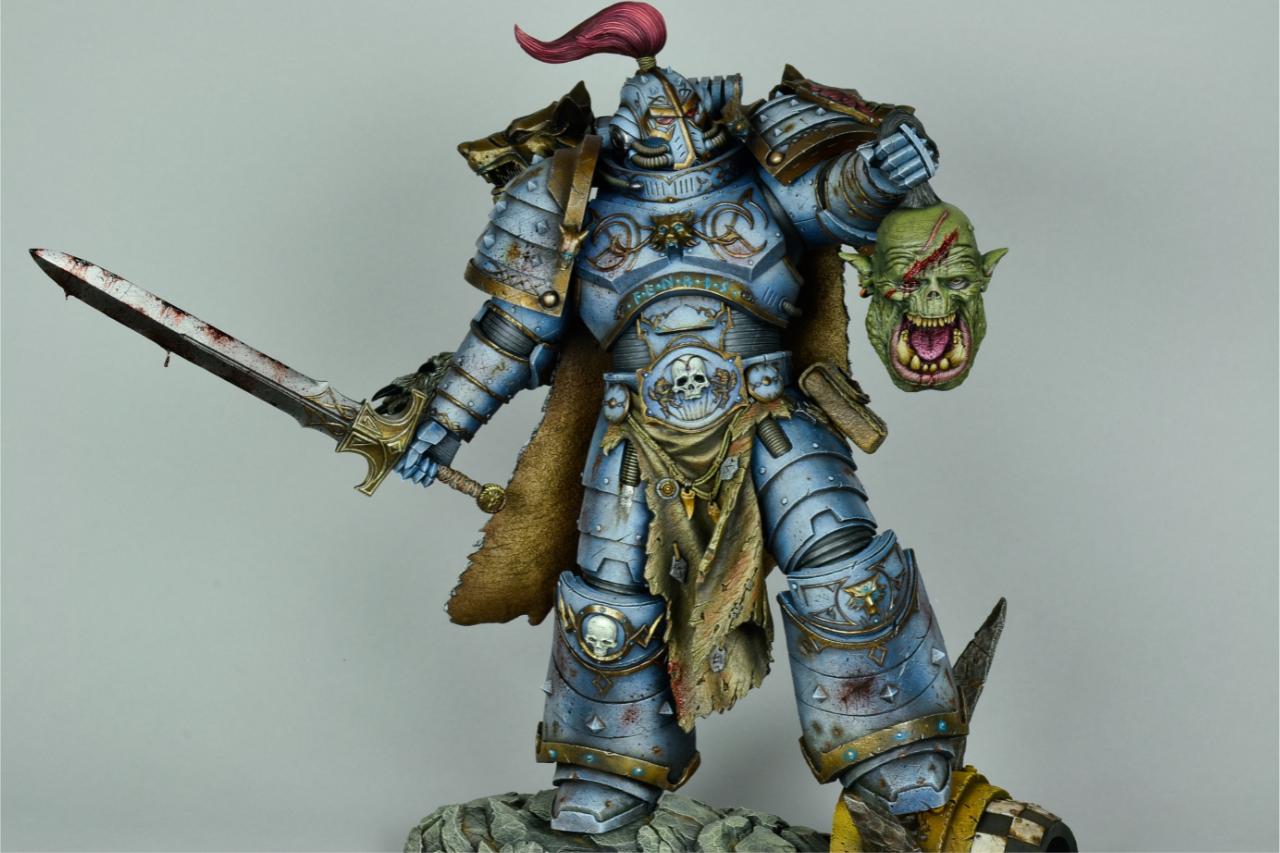
8. What advice would you give to someone interested in taking the plunge to become a commission
painter?
I would say to think twice before they decide to make the jump and become a full time
commission painter. It’s a great career or a way to make a living, without a doubt, but it’s also not as easy
as many people think. When you decide to become a commission painter, painting stops being a hobby
and becomes a job with all its cons. I know it sounds trivial but somehow a lot of people seem to miss
that obvious difference. I know people who enjoyed the hobby so much that they decided to make a living
out of it at some point in their lives, and after a time, shorter or longer, they came to realise that they don’t
enjoy painting as much as they did when they used to do it as a hobby. Deadlines, difficult or disliked
paint schemes, meeting client’s expectations, repeatability and tiredness that comes along with it, all of
that can drain the joy out of the painting process and lead to burnout. So one has to be aware of all the
difficulties on the way to become a full time commission painter.
But if that’s your goal, try taking on a few smaller commissions first, and find out if it’s something
for you. Treat a customer seriously and with respect, just like you would like to be treated if you were in
their shoes. A happy customer is an advertisement, free of charge, as they will pass on their satisfaction
and positive experience to their friends and other members of the gaming community, who may be your
potential clients.
Build your own portfolio. It’s your business card and a proof of what can be expected of your
services. The better pictures of your creations you take, the clearer your skills are to potential clients.
Participate in as many painting competitions as you can. The amount of awards collected is a
statement of your accomplishments as an artist and a proof of your talent.
There are numerous painting services out there these days, and it’s more difficult to break
through every year so the beginnings won’t be easy. Take on whatever commission you can, don’t be
fussy, give a 100% of yourself, build a portfolio and a happy customer base. With time and
accomplishments you will be able to choose which commissions you would like to take on and keep the
joy of painting alive.
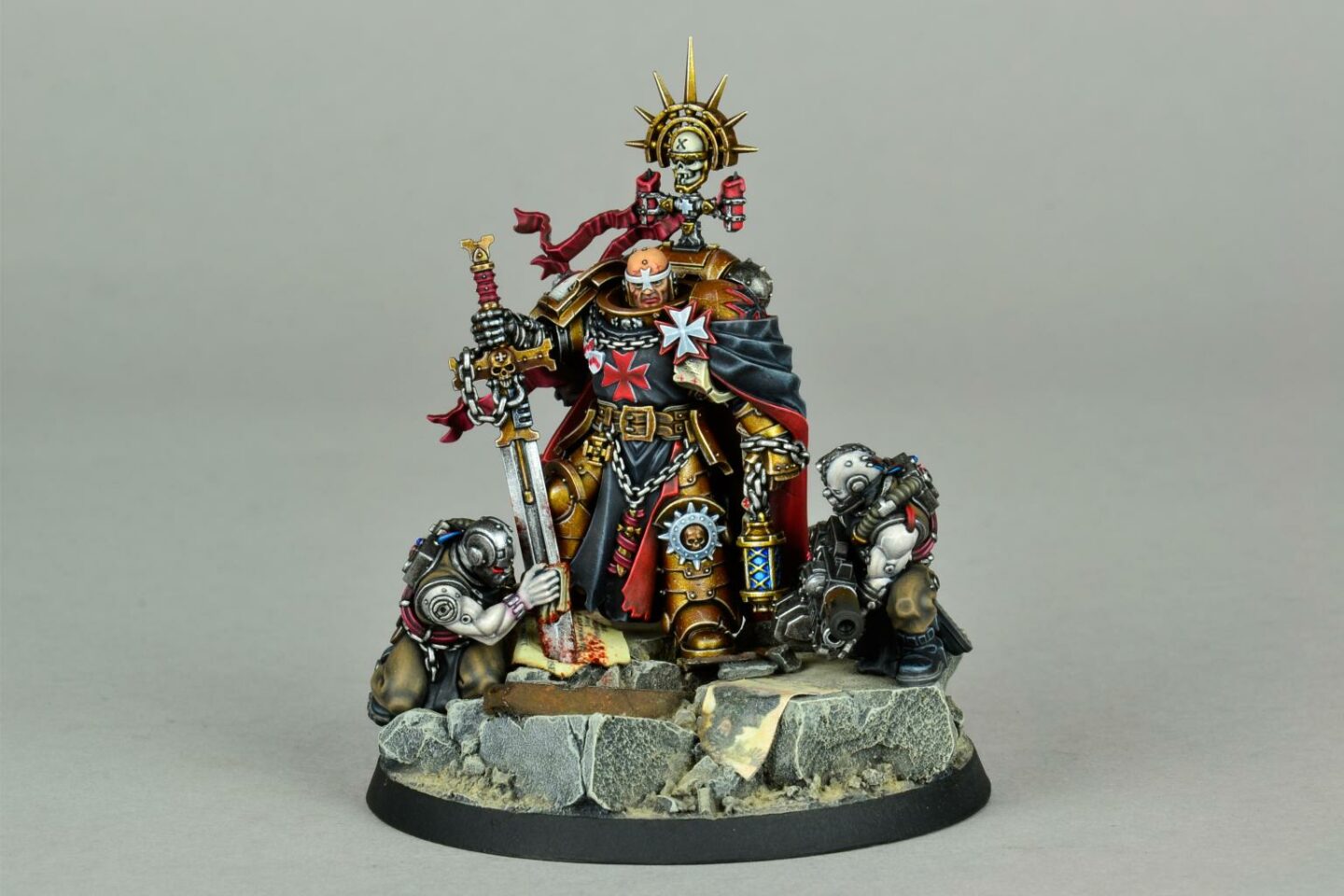
9. Which do you prefer to paint – vehicles or people and why?
Definitely vehicles are my first choice. I have always felt more comfortable painting inorganic
matter with its hard edges and flat surfaces rather than organic shapes, mostly because achieving
satisfying results on machines has always come easier to me. Plus, painting machines gives me more
possibilities to introduce many different weathering techniques, which I like so much, and I’m keen to use
as often as I can. Vehicles are usually bigger than miniatures and since my eyesight is not as good as it
used to be a few years ago, painting them is easier on my eyes.
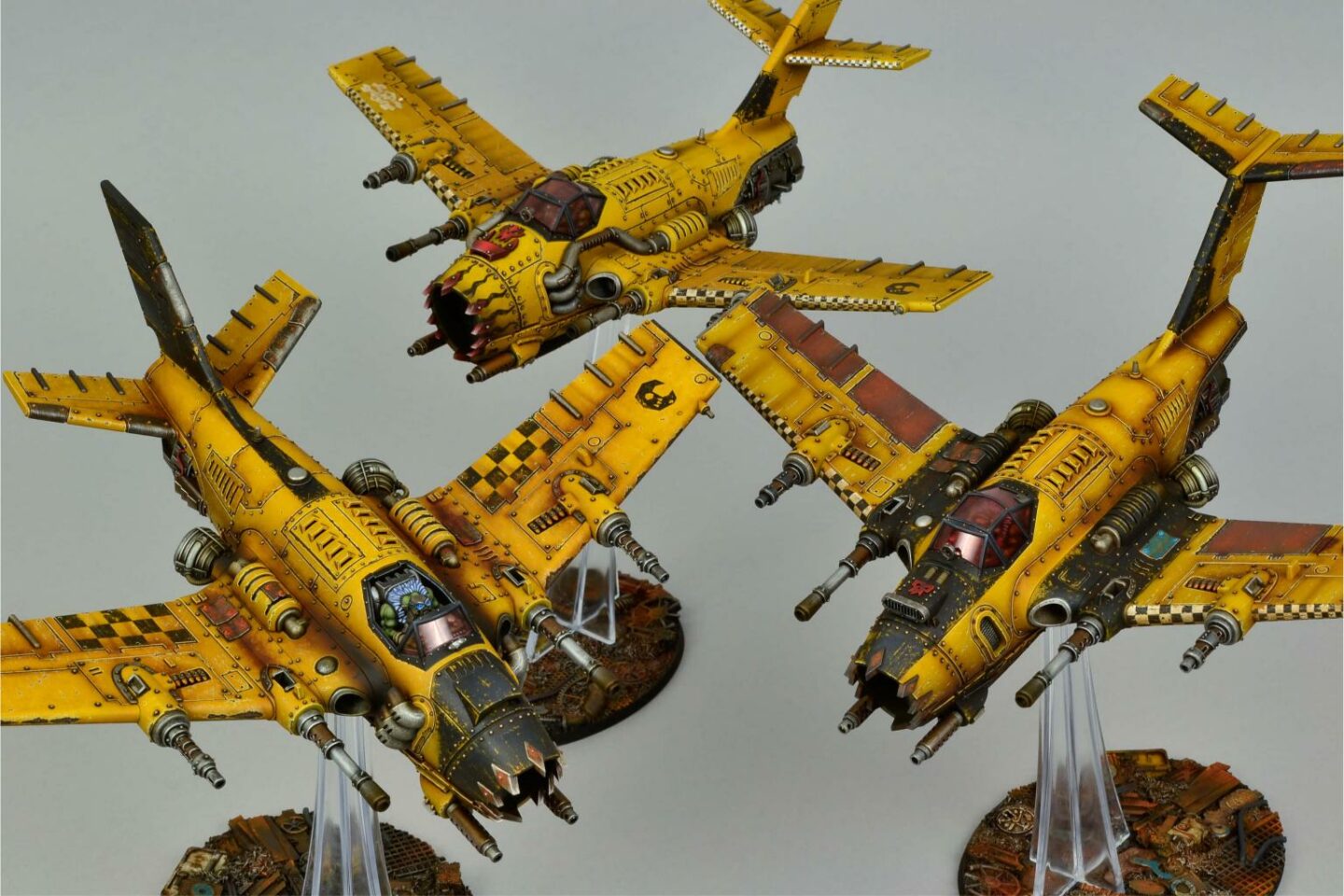
10. What do you most enjoy about miniature painting?
The creation process itself. To see how the project slowly evolves from bare plastic or resin to a
fully coloured and assembled piece. Some say that it’s not the destination that is most important but the
road we take to get there and experiences that come along the way. Very often it’s a bumpy road from
start to finish and not everything goes as smoothly as we would like. Discouragement is often part of the
process, when we cannot obtain desired results. However, overcoming that creative block provides joy in
abundance, giving me a positive kick and making me want to paint even more.
And as a commission painter, what brings joy the most is the satisfaction of my customers. Every
time I hear words of appreciation and praise, it assures me that what I do really matters. Not only to
myself but also, and mostly, to others. Making others happy has kind of become my main drive for all
those years. After all, it’s already been 8 years since I took this road. I am still in the business and
painting miniatures has never been more joyful!
